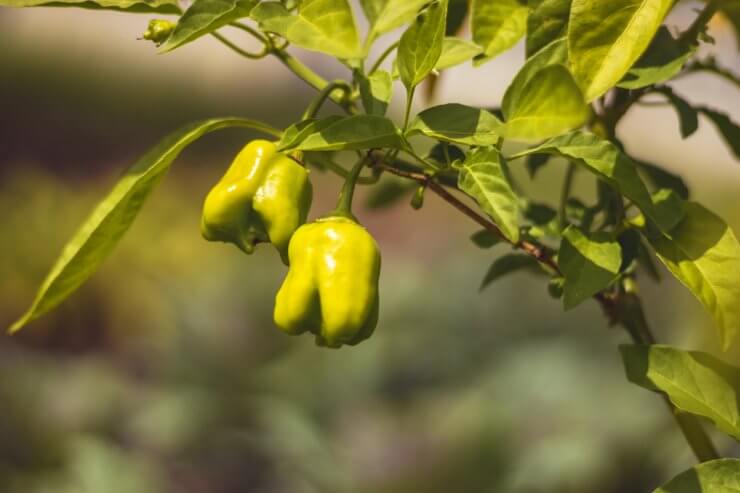
Young bell peppers growing in the sun
Bell peppers like a full day of sun—preferably at least six hours of direct sunlight.
The soil should be well-drained and rich in organic matter. Sandy loam soil is best. Do your bell peppers a favor and be sure to mix in some aged compost before you plant them. And be sure to add a little starter fertilizer when you transplant your seedlings, or once you’ve thinned out your direct-sown plants.
In general, bell peppers prefer a soil pH of 6.5 to 6.8, although you may see some varieties with slightly different requirements; always check your seed packet, seedling information, or ask for details at your local garden center or extension center.
One of your annual gardening tasks should be to get your soil tested. You’ll save yourself a lot of time and aggravation, and your plants will thank you by growing instead of languishing. Your local extension center will have information on how to get your soil tested. For a little bit of preparation work, you can get a lot of information about the composition of your soil.
Bell peppers like it hot, so be patient if you’re nurturing seedlings indoors, and don’t direct sow seeds too early; you’ll just be disappointed. If you’re in a temperate gardening zone, wait to plant or transplant bell peppers until after the last frost. If you live in a region that’s frost-free, you have much more flexibility. Plant or transplant when the soil temperature is at least 60 degrees F.
How do you grow your bell peppers—direct sow or transplants? Have you had your soil tested or do you do it yourself? Please tell us your tips and tricks for growing great bell peppers.


 Previous
Previous


Direct sun?
They enjoy at least 6 hours of direct sunlight. 🙂